We Were Promised Fusion Energy
Credit to Author: Daniel Oberhaus| Date: Thu, 26 Oct 2017 16:04:56 +0000
For the entirety of recorded history, humans have worshipped nuclear fusion. It’s gone by different names over the millennia, of course: the Egyptians called it Ra, the Greeks called it Helios, and the Aztecs knew it as Tonatiuh.
Today, most of us know it as the Sun, but leading physicists around the world regard it with the same sense of awe as our ancient ancestors. This is not because these physicists believe the Sun rides across the sky in a giant reed boat, ready to exact retribution on us mortals at any moment, however. Rather, they know that the Sun harbors the secret to a virtually unlimited source of clean energy.
Every second, trillions of hydrogen ions are fusing in the Sun’s ultradense 27 million degree core. The crushing weight of the Sun’s gravity forces the protons of hydrogen atoms so close together that they combine into a heavier atom (helium) and release an enormous amount of energy: a process called nuclear fusion. Even though the natural fusion reactors at the heart of stars are abundant in the universe, this process has been remarkably hard to replicate on Earth. This is because the Sun’s own gravity is able to contain the ultra hot and ultra dense plasma at its core, but trying to contain even small amounts of hydrogen plasma in containers on Earth for a few hundredths of a second has proven to be a difficult challenge for engineers and physicists.
If the processes powering the fusion reactor at the Sun’s core could be recreated on Earth, it would be one of the most important events in the history of our species. Nuclear fusion power plants could end our dependency on fossil fuels and provide a virtually limitless, highly efficient source of clean energy. They could help end the developing world’s energy crisis and lift it from poverty. They could provide the power for large scale desalination plants and end water shortages. They could also change life off Earth, providing power to lunar and Martian colonies, or even interstellar generation ships.
Of course this future assumes that fusion reactors are even possible.
I went to two of the world’s leading nuclear fusion research centers—Sandia National Labs in New Mexico and General Fusion outside Vancouver—to see how close we are to bringing the power of the stars down to Earth. At Sandia, many of the physicists see fusion research as an exploratory science and a phenomenon that we’re just beginning to understand, even after a half century of research. The researchers at General Fusion, however, are not content to keep waiting for fusion and are actively attempting to harness fusion energy for a practical power plant.
So far, extracting more energy from a fusion system than was used to power it remains a distant goal for these nuclear physicists. The main problem is figuring out how to create and sustain the extreme conditions that make the plasma at the core of fusion reactions possible. Both Sandia and General Fusion have made groundbreaking strides in this direction, and are leading actors in an 80-year drama that began when the Australian physicist Mark Oliphant first achieved man-made nuclear fusion in 1932.
“Fusion will be the source of energy for thousands of years to come. We think we’re going to accomplish that in our lifetimes.”
Ever since Oliphant’s discovery, figuring out how to make a fusion reactor, or a “star in a jar,” has been one of the holy grails of physics. It ended up being a more difficult problem than any of the fusion pioneers in the early twentieth century anticipated, which led to a running joke among nuclear physicists: fusion is always 30 years away.
Up until the turn of the millennium, the overwhelming majority of fusion research in the US was conducted by government scientists behind the closed doors of the Department of Energy’s national laboratories. Here fusion research was closely linked with national security concerns. Initially, government physicists focused on harnessing fusion energy to make nuclear weapons. Although a pure fusion bomb was never created, fusion energy was integrated into hybrid fission-fusion thermonuclear weapons—colloquially known as hydrogen bombs—which were far more powerful than the fission based predecessors that were dropped on Hiroshima and Nagasaki.
Although fusion helped create the most dangerous weapons on the face of the planet, today publicly funded fusion research in the US is increasingly geared toward the effective stewardship of the stockpile of these nuclear weapons. In the last two decades, however, private money has also been pouring into developing fusion reactors, and a handful of companies are leveraging publicly funded fusion research in a race to develop the first nuclear fusion power plant. The stakes are high—fusion research is incredibly expensive and unlikely to be profitable for decades—but the potential rewards are far higher.
Z MACHINE
On the outskirts of Albuquerque, New Mexico, a sprawling 8,700-acre complex populated with faceless buildings is surrounded by barbed wire fencing and an untold number of other security precautions invisible to the naked eye. Each morning, a line of cars stretches for miles beyond its main entrance gate as employees wait to receive clearance from heavily armed guards.
This is Sandia National Laboratories, one of the three national labs under the purview of the National Nuclear Security Administration. Sandia is a part of the larger Kirtland Nuclear Weapons Complex, which includes the Air Force’s Nuclear Weapons Center and what is believed to be one of the largest nuclear weapons repositories in the United States. Kirtland is arguably the most important part of the US nuclear infrastructure, and consequently, the entire US national security apparatus.
Most of the buildings at Sandia are identified only with numbers due to the sensitive nature of the work being done there. In this respect, the building housing the most powerful x-ray source in the world is unique in that it actually has a title: the Z Pulsed Power Facility.
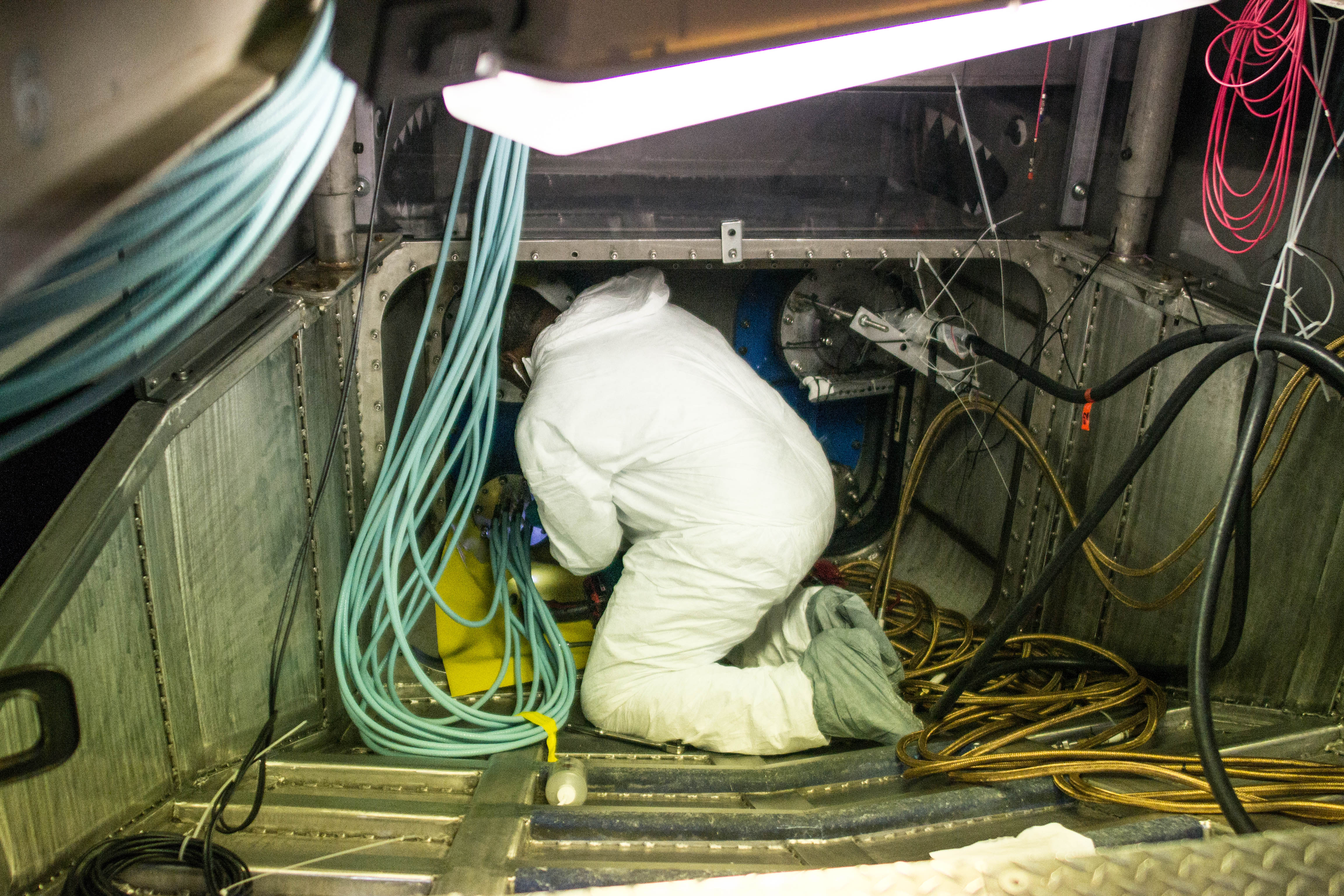
When I arrived at the Z facility with my escort, I was greeted by Michael Cuneo, the senior manager of the Z machine who has spent the majority of his decades-long career firing some of the biggest lasers in the world at targets the size of a quarter to facilitate fusion reactions. On that particular morning, Cuneo was visibly excited and whisked my escort and I into the building.
“You’re just in time,” Cuneo said. “We’re about to do the shot.”
The Z machine occupies a large warehouse, at the center of which is a vacuum chamber that could comfortably fit an SUV inside of it. This vacuum chamber houses a target made mostly of the hydrogen isotope deuterium that is about the size of a quarter. Around the vacuum chamber are two moats containing water and oil respectively. These moats serve to insulate the cables that are connected to massive capacitor banks that basically act as large batteries for the Z machine.
No more than once a day, these capacitors are charged with enough energy to light over 100 homes for several minutes. This energy is then compressed to fire in a single shot at the target in the vacuum chamber. Each shot has 1,000 times the electricity of a lightning bolt and occurs 20,000 times faster.
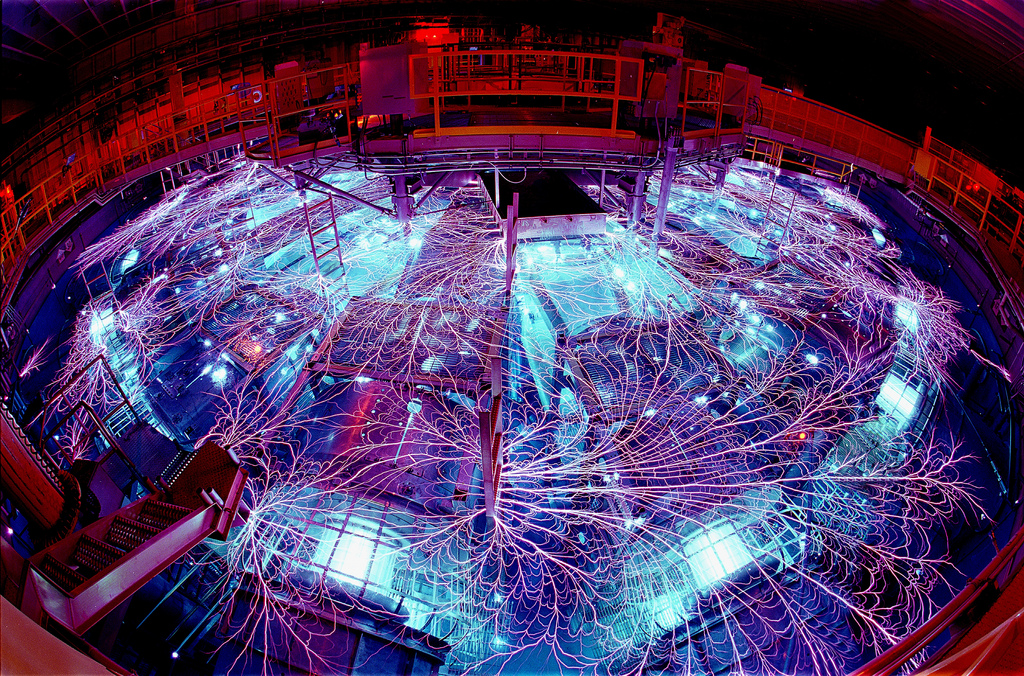
When this electrical shot is focused on the target, it basically explodes the target atoms, causing a bunch of electrons to break loose from their nuclei. This turns the target into a plasma and creates a strong magnetic field that forces the nuclei inward at speeds of roughly 3,000 miles per second. The result of compressing energy and time to this degree is a fusion reaction and a lot of x-ray energy.
As we approached the firing time, technicians scuttled in and out of the room housing the Z machine making last-minute adjustments. The Z machine only fires one shot per day, and some physicists have to wait weeks or months for their opportunity to use the Z machine for their research, so it’s important that everything is perfect before each shot.
After the last of the technicians had left the Z machine, the doors were locked and an orange light began flashing in the hallway warning of the impending shot. A loud thud was heard in the control room where we were standing, the lights dimmed briefly, and a tremor was felt in the floor. Another day, another successful Z machine experiment.
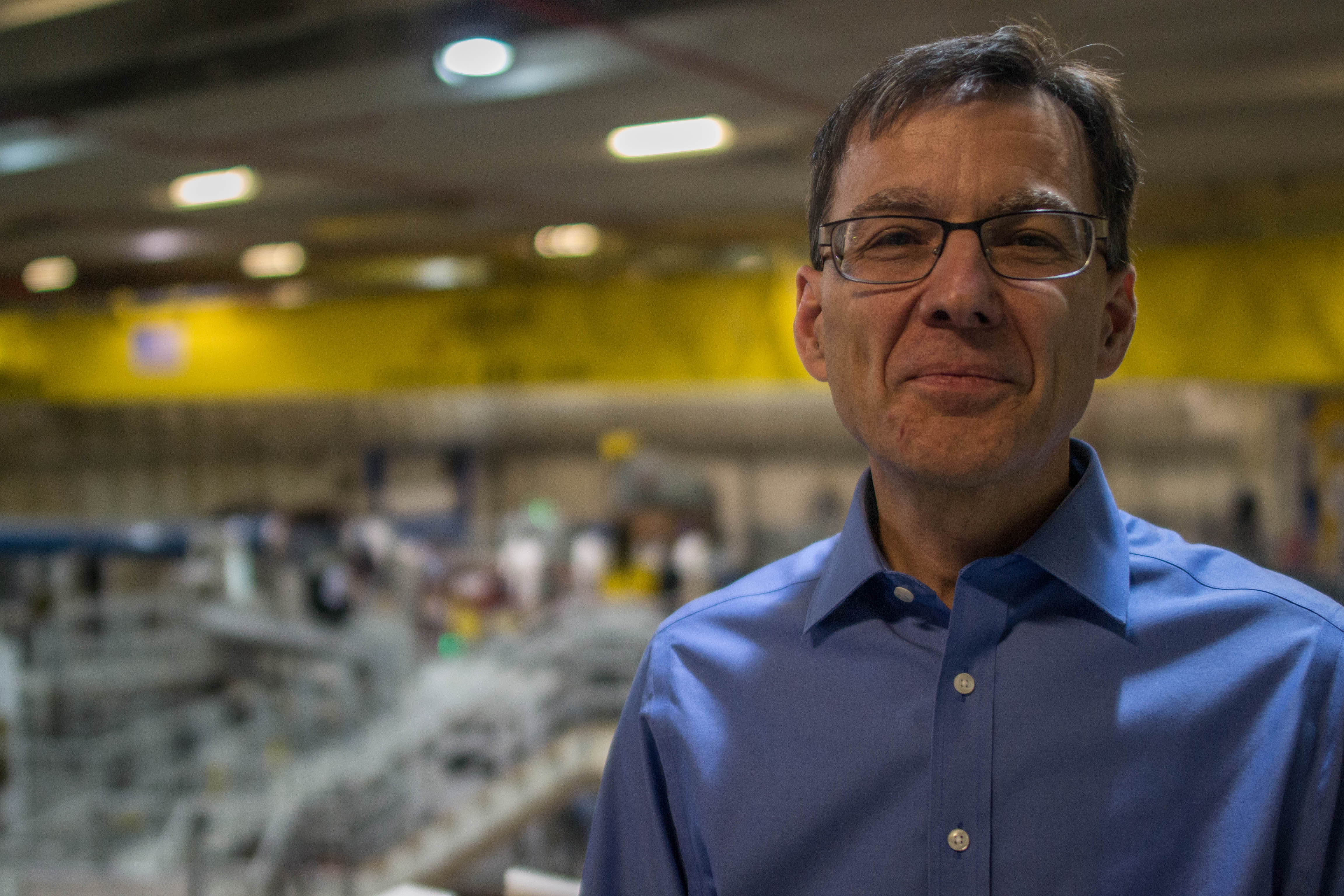
This approach to creating nuclear fusion is known as magnetized target fusion, or MTF. It is Sandia’s latest approach to fusion energy research, after decades of alternative approaches. The Z machine began as a series of particle beam accelerators in the 1970s, its creation by the government motivated by fears about an energy crisis as well as a need to study fusion reactions in thermonuclear weapons in a lab setting. In 1996, the facility upgraded its ion beam accelerators with a z-pinch, which enhanced their effect by creating a magnetic field that contracts the around the particle beam creating a plasma. This technology has been refined and altered over the last 20 years to create the Z machine at Sandia today.
As we waited for technicians to clear the Z machine and make sure it was safe for us to enter, I asked Cuneo about the nature of the experiment we had witnessed. Although he couldn’t go into details due to the implications of the experiment for national security, Cuneo said it had to do with simulating the conditions at the core of a nuclear bomb after detonation. Much of the research done with the Z machine is for similar purposes, although physicists also use it to simulate more exotic scenarios. For example, earlier this year the Z machine was used to overturn long standing theories about the nature of the plasma surrounding black holes.
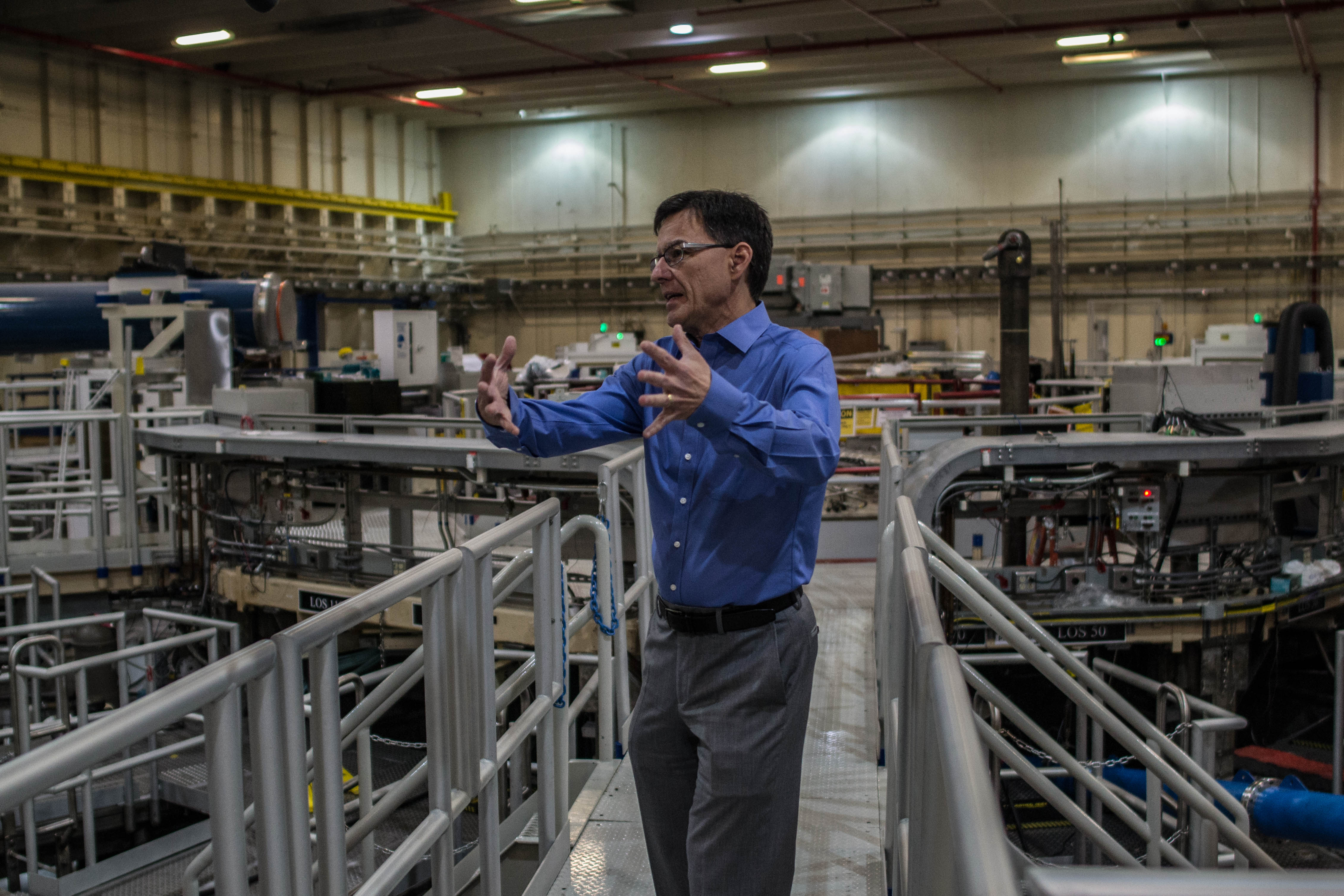
The one thing the Z machine is definitely not pursuing, according to Cuneo, is a scalable fusion energy reactor. (Although this has been researched at the facility before).
“The Z machine is a single shot facility,” Cuneo told me. “If fusion energy becomes practical, it’s only going to be possible if you can repetitively pulse the facility. That’s not our job.”
The fusion conditions created at Z last for a few milliseconds. If this approach to creating fusion were to be used to create a fusion power plant, the shots that currently only occur once per day would not only have to occur in rapid succession around the clock, but the energy produced by the fusion reaction would have to be harvested and distributed. According to Cuneo, even if Sandia pursued the creation of a pulsed fusion reactor, the Z machine is far from achieving the breakeven energy point that is needed to create a fusion reactor.
When it comes to fusion energy, there are two major milestones to mark progress in the field. The first is known as scientific breakeven, which is when there is the same amount of energy released in a fusion reaction as there is in the plasma that created it. The second milestone is what Cuneo called “engineering breakeven,” which is when a fusion reactor can be scaled to the point that the amount of energy produced by the fusion reaction is the same as the amount of energy required by the entire facility to make that fusion reaction happen.
So far, the National Ignition Facility in California is the only research lab in the world to have demonstrated a fusion reaction that achieved scientific breakeven.
“It’s a tremendous accomplishment,” Cuneo said. “At Z we’re at about 1 percent of scientific breakeven. We hope to achieve scientific breakeven in the next five years.”
From there, achieving engineering breakeven is an even more daunting challenge that requires a fusion reactor that is large enough to produce enough energy to make up for the energy that powers it. The next great challenge beyond engineering breakeven is creating fusion reactions that result in enough net positive energy to make connecting them to the power grid worth it.
Due to the scientific challenges involved, Cuneo was skeptical about seeing a single kilowatt—the power draw of an average microwave—of fusion energy on the grid before 2050. But a handful of private companies have cropped up in the last decade or so that are locked in a heated race to make a fusion power plant a reality.
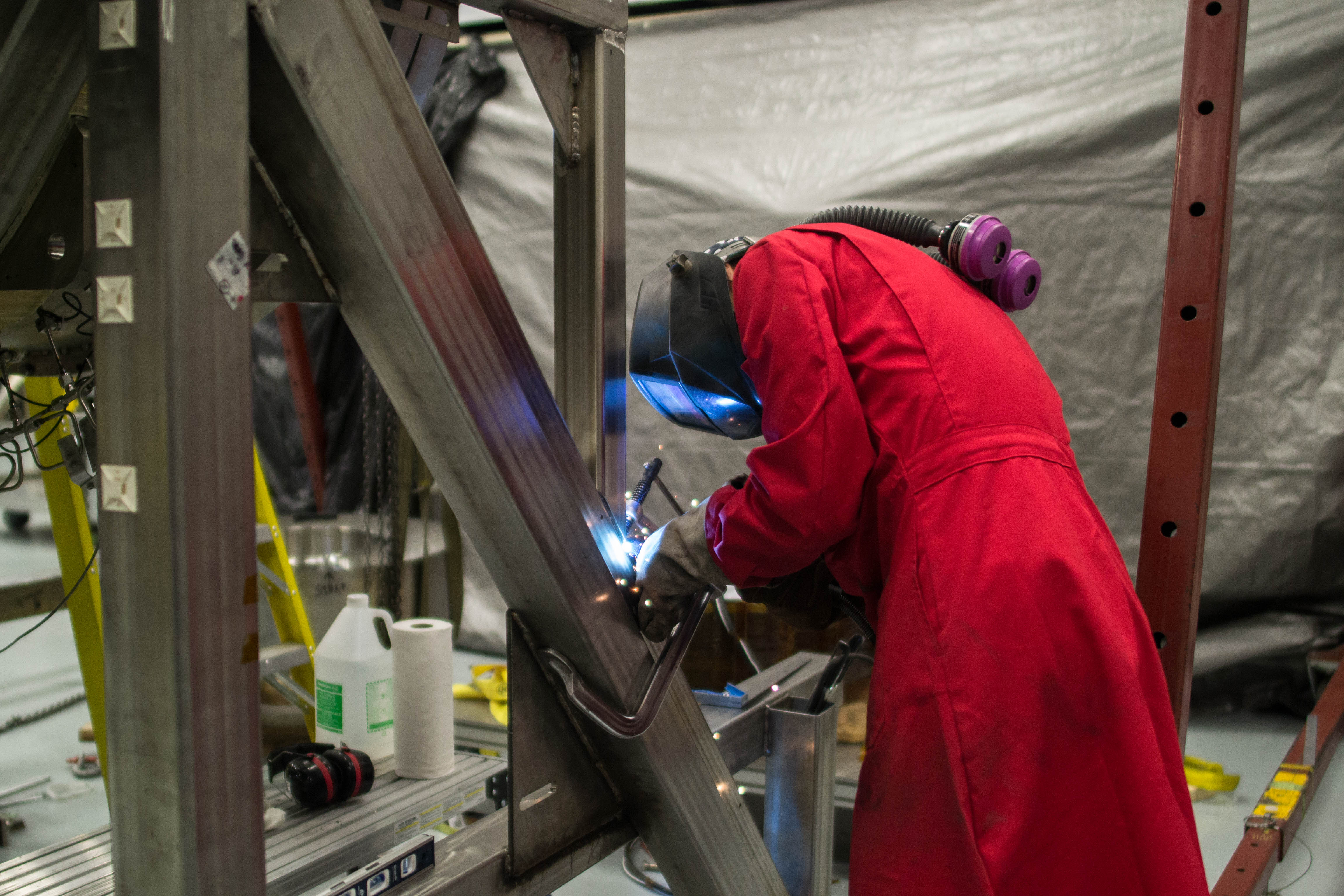
GENERAL FUSION
General Fusion is located In a light industrial park across the street from a Costco in Vancouver, British Columbia. From the outside, it looks like the last place you’d expect to find physicists doing cutting-edge research on nuclear fusion, but step inside and the place is a hive of activity, with dozens of engineers and technicians in red lab coats hurrying from one inscrutable giant machine to the next.
I was brought into a back room where Michael Delage, General Fusion’s Chief Technology Officer, stood before a massive metal orb with covered pistons sticking out from its surface in various directions. This, he explained, was a spheromak. It’s a scaled-down prototype of the machine that General Fusion hopes will one day be at the core of a real life fusion power plant. Like Sandia, General Fusion is also pursuing magnetized target fusion as the most viable candidate for a fusion reactor that can generate net positive energy. The main difference, however, is General Fusion’s approach to achieving this goal.
The orb at General Fusion is one of the two main components of the company’s planned fusion reactor, the other being a plasma injector. The way the reactor will work is that a lot of lead-lithium liquid metal will be pumped into the orb, where it will basically be swirled around to create a vortex. In a plasma injector, a deuterium-tritium gas will be hit with an immense amount of electricity for a fraction of a second, heating it up to around 9 million degrees Fahrenheit and creating a plasma. This plasma is then magnetized to form a ring which is injected into the orb, where it will be contained in the hollow center of the swirling vortex of liquid metal.
When the plasma is injected into the vortex, dozens of pistons on the side of the orb will all fire and hit the side of the orb at once. This will create an acoustic shock wave that will cause the liquid metal to collapse around the plasma, compressing it until it has heated up to nearly 270 million degrees Fahrenheit and causes fusion to occur. The energy released during this fusion reaction will heat the liquid metal surrounding the plasma, and this heated liquid metal will be used to produce steam that turns turbines to generate electricity, just like in a normal nuclear fission power plant today.
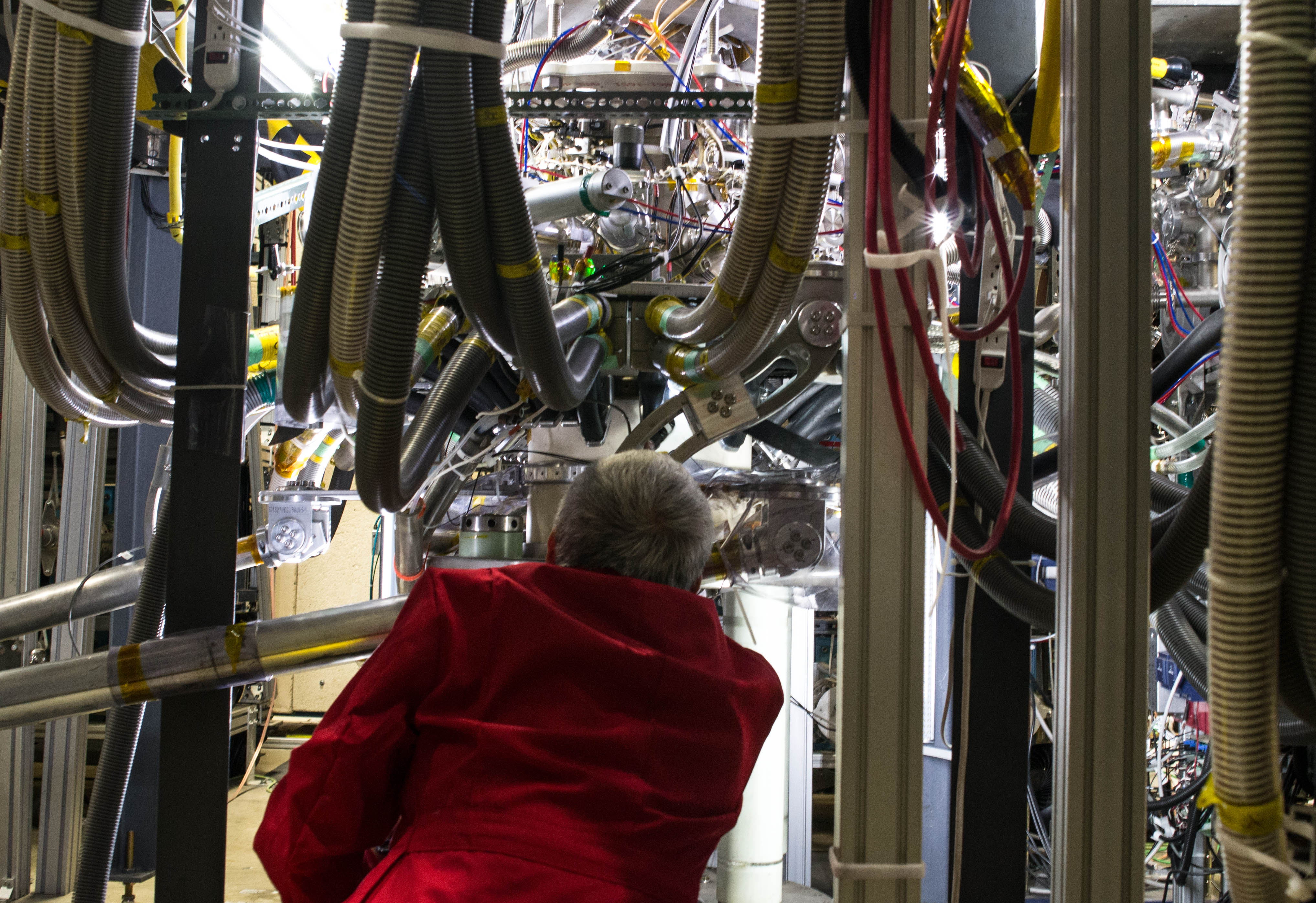
This idea for this type of nuclear fusion reactor was first floated in the 1970s by the US Naval Research Laboratory in a project called LINUS. Since it was founded in 2002, General Fusion has been working to improve this design based on technological advancements that have occurred since LINUS was first proposed. Its conception of a commercial fusion power plant is elegant in its design, but so far General Fusion hasn’t been able to make a functioning prototype.
The main stumbling block to a practical commercial fusion reactor is figuring out how to confine and sustain the plasma required for fusion to occur. In the Sun, the star’s own gravity works to confine the plasma in its core, but even the strongest materials on Earth are unable to withstand the extreme temperatures and pressures being generated at places like Sandia and General Fusion to create plasma. Sandia solves this problem by using the magnetic field created when the fuel target is hit with an immense amount of energy to contain the resulting plasma.
Likewise, General Fusion also contains its plasma using strong magnetic fields, although its approach to generating this magnetic field is a bit different. Over the course of its history, General Fusion has tried 15 different plasma injector designs. Earlier this year, the company reported that its small scale experimental plasma injector, SPECTOR, had been able to sustain plasma long enough that the injector could then be integrated with the company’s compression system. As General Fusion told Motherboard in May, it expects to have a functioning fusion reactor prototype in the next 3 to 5 years. As for how long it will take to achieve a net positive fusion energy reactor after creating a successful prototype, Delange could only shrug.
“The hardest thing to answer in this game is ‘How soon?'” Delange said. “It’s hard to forecast for fusion, but we have a good line on the next four to five years as we try to take these subsystems and put them into a large-scale integrated machine.”
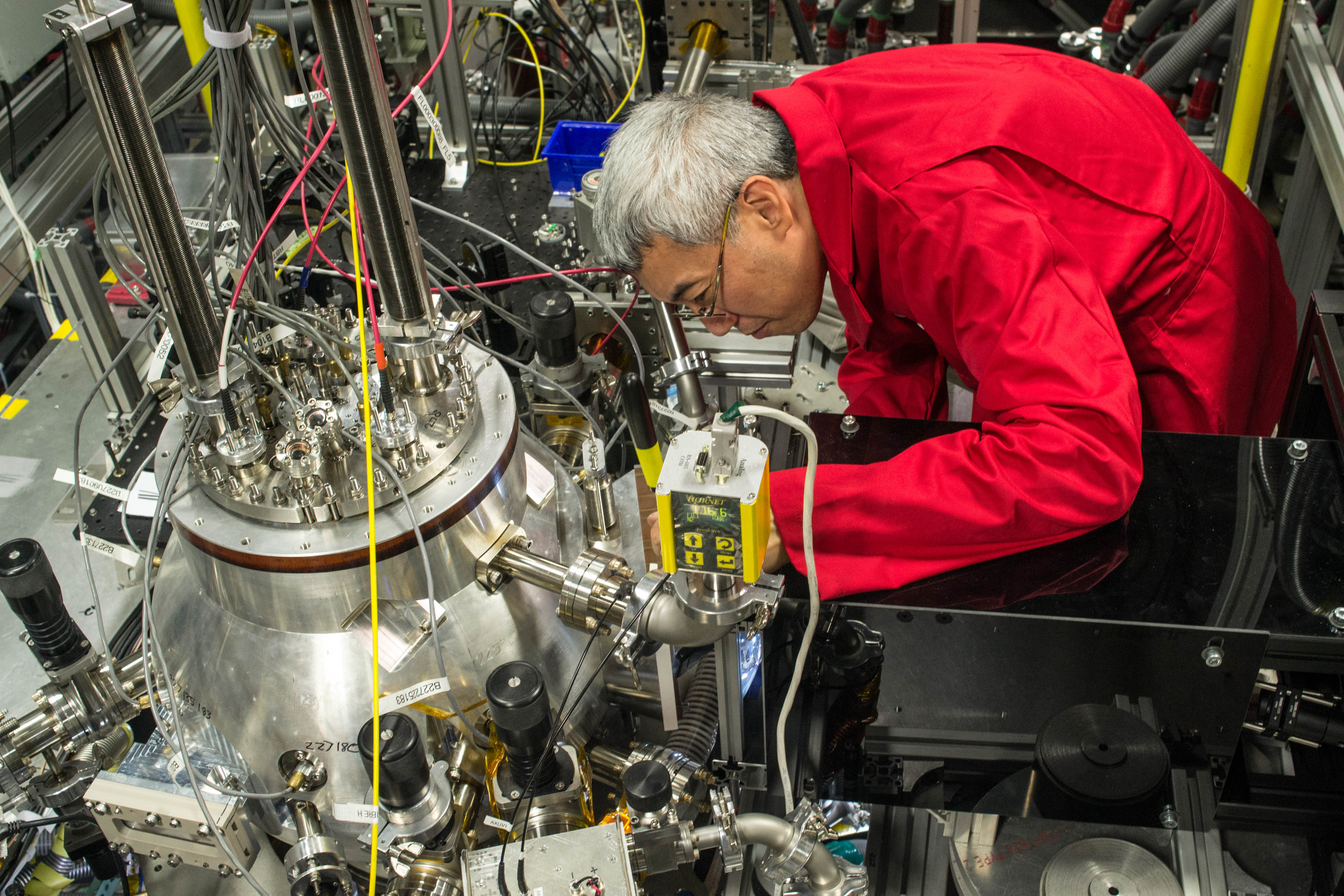
A TALE OF TWO FUSION REACTORS
Delage is the first to admit that the work being done at General Fusion to create a commercial fusion power plant wouldn’t have been possible without the decades of publicly funded basic research in government laboratories. The question is whether this work has much chance of actually resulting in a fusion reactor that generates net positive energy and can be integrated into the power grid.
Today, the government labs that pioneered research into fusion energy are still not really pursuing fusion energy outside of its applications. According to Cuneo, this is partly because the risk-reward for this type of research simply isn’t there at a time when many national labs are experiencing a budget crunch. The other reason is that most physicists in the government sector feel that trying to create a commercial fusion reactor at this point in time is jumping the shark.
To put the problem in perspective, only a single national lab, with access to massive facilities and budgets that dwarf the investments of the best funded fusion start ups, has been able to achieve scientific breakeven with fusion. This is a far cry from engineering breakeven, and even further from net positive energy fusion reaction. This can make trying to build a fusion power plant at this point seem overly optimistic at best, and foolhardy at worst.
Yet it is precisely these sorts of high risk efforts that attract venture capitalists who are hoping for a big payoff for their investment. In the 13 years since it was founded, General Fusion has raised approximately $100 million in capital, according to Delage. For the sake of comparison, the Z facility at Sandia has an annual budget of $111 million. In the startup world, $100 million in investments is nothing to bat an eye at, but when it comes to fusion research, it’s chump change. This funding disparity is precisely what makes the work being done at General Fusion so impressive.
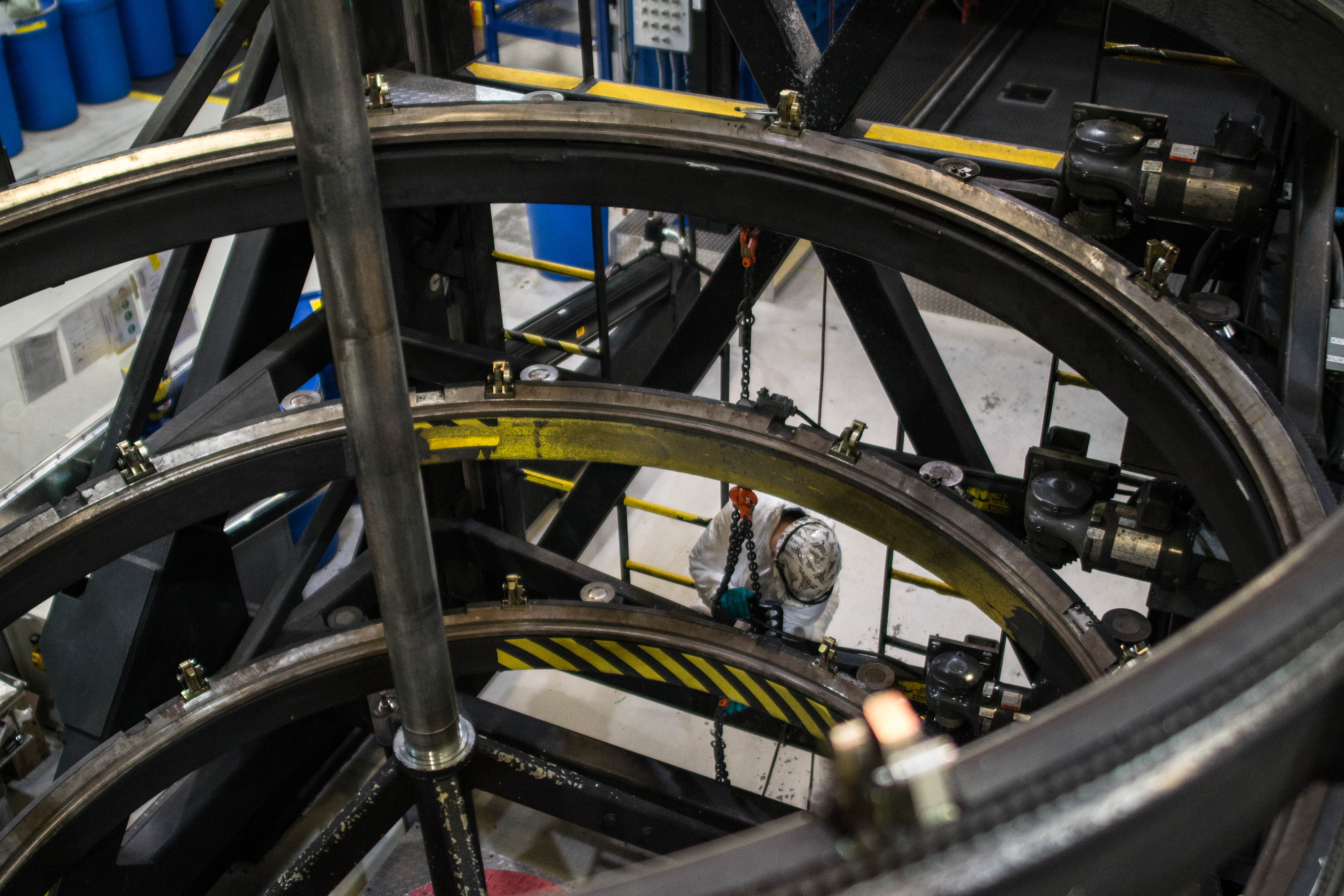
Although the company hasn’t yet achieved fusion, much less scientific or engineering breakeven, the work on its fusion reactor subsystems has been remarkably successful so far given that the company is operating with a fraction of the budget earmarked for government facilities like Z. General Fusion’s next step is to integrate these subsystems to create a functioning fusion reactor and to then to keep optimizing this reactor until it has reached scientific and engineering breakeven, and finally produces fusion reactions that result in net positive energy. At that point, the fusion reactor could be integrated with the power grid as a form of virtually unlimited, clean energy.
But as Cuneo and Delange both pointed out, even then, it would be awhile before it made a dent in the world’s energy regime.
“Energy transitions take a long time,” Cuneo told me. “If today you had a licenseable and practical fusion reactor plant, it would take 40 years to build enough plants to make a difference—and we may be 30 to 40 years away from a practical fusion energy technology.”
Moreover, even if practical, scalable fusion reactors are achieved, it’s not entirely certain that fusion will live up to its moniker as a “clean and unlimited” form of energy. At the moment, both Sandia and General Fusion plan on using 50-50 deuterium-tritium as the fuel for fusion reactions (Sandia currently uses a fuel cell that is over 99 percent deuterium, but has begun to slowly incorporate tritium into its experiments in the coming years). This combined deuterium-tritium fuel will release up to 90 times more neutrons than deuterium fuel alone, and each of these particles carries four times the energy.
While the integration of the heaviest hydrogen isotope as fusion fuel will yield far more energy than current experiments, Cuneo isn’t convinced that this would necessarily be an entirely clean fuel if it were adopted at scale in power plants. Deuterium can easily be created from seawater, but manufacturing tritium is a more difficult process that requires a lot of lithium to produce. Today, there’s only about 20 kilograms of useable tritium on Earth.
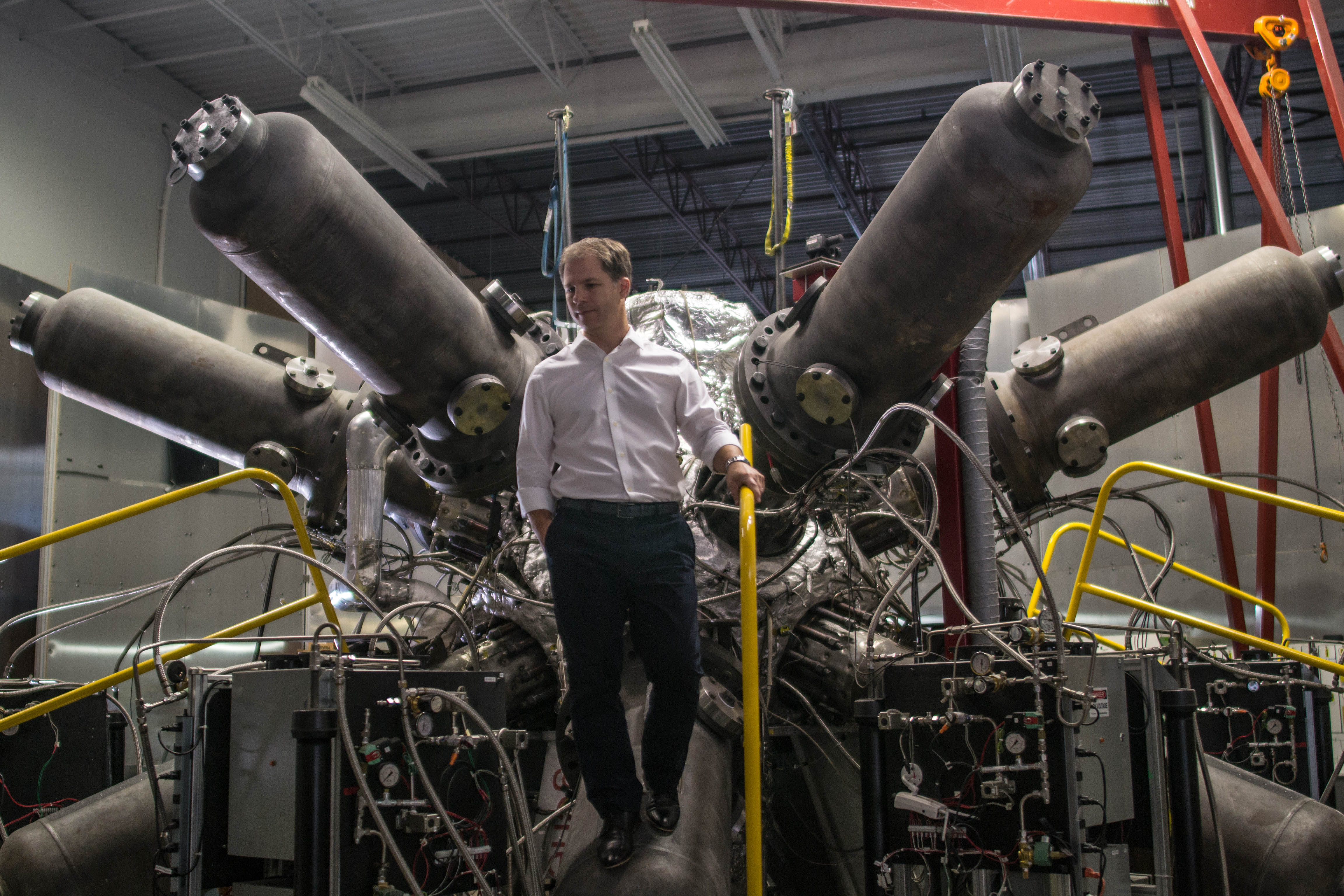
“We’ve never demonstrated that the fusion fuel cycle is closed,” Cuneo said. “If we had fusion economy with a fleet of fusion reactors, it would be a tritium economy. You’d need to stand up a Tritium fabrication, breeding and handling infrastructure, and miles of pipeline just like when we built up the natural gas industry. None of this has been demonstrated at scale yet.”
Contrary to Cuneo’s tempered predictions, at General Fusion there is a pervasive optimism about the work being done on the company’s fusion reactor. This can partly be attributed to the company’s successes so far, but also to the fact that General Fusion must be optimistic. The company is ultimately beholden to cash flow from its international investors, which include the likes of Amazon CEO Jeff Bezos and the Malaysian government, who will eventually want to see some bang for their buck. Most venture capitalists wouldn’t be content waiting 50 more years for a return on their investment, which means that in many ways General Fusion is racing against the clock. If it’s unable to achieve fusion and start making a return on its research, at a certain point investors will stop throwing money at the project.
“In terms of energy, humans have gone from burning wood to coal and gas to nuclear to wind and solar,” Delange told me. “Fusion will be the source of energy for thousands of years to come. We think we’re going to accomplish that in our lifetimes.”
Yet even if General Fusion doesn’t succeed, dozens of other projects employing thousands of scientists around the globe are also in the race to develop a practical source of fusion energy. In the private fusion reactor space, companies such as California-based Tri Alpha and the UK company Tokamak Energy have both been able generate and sustain plasma in their reactors, despite their radically different approaches to driving fusion reactions. Tri Alpha’s design is based on colliding beam fusion, which basically means that the particles meant to undergo fusion are sent on a crash course in a particle accelerator at the ridiculously high speeds that will cause a fusion reaction to happen. Tokamak Energy, on the other hand, uses a tokamak reactor, which is essentially a big donut-shaped machine that uses magnets to sustain plasma in a ring around the device.
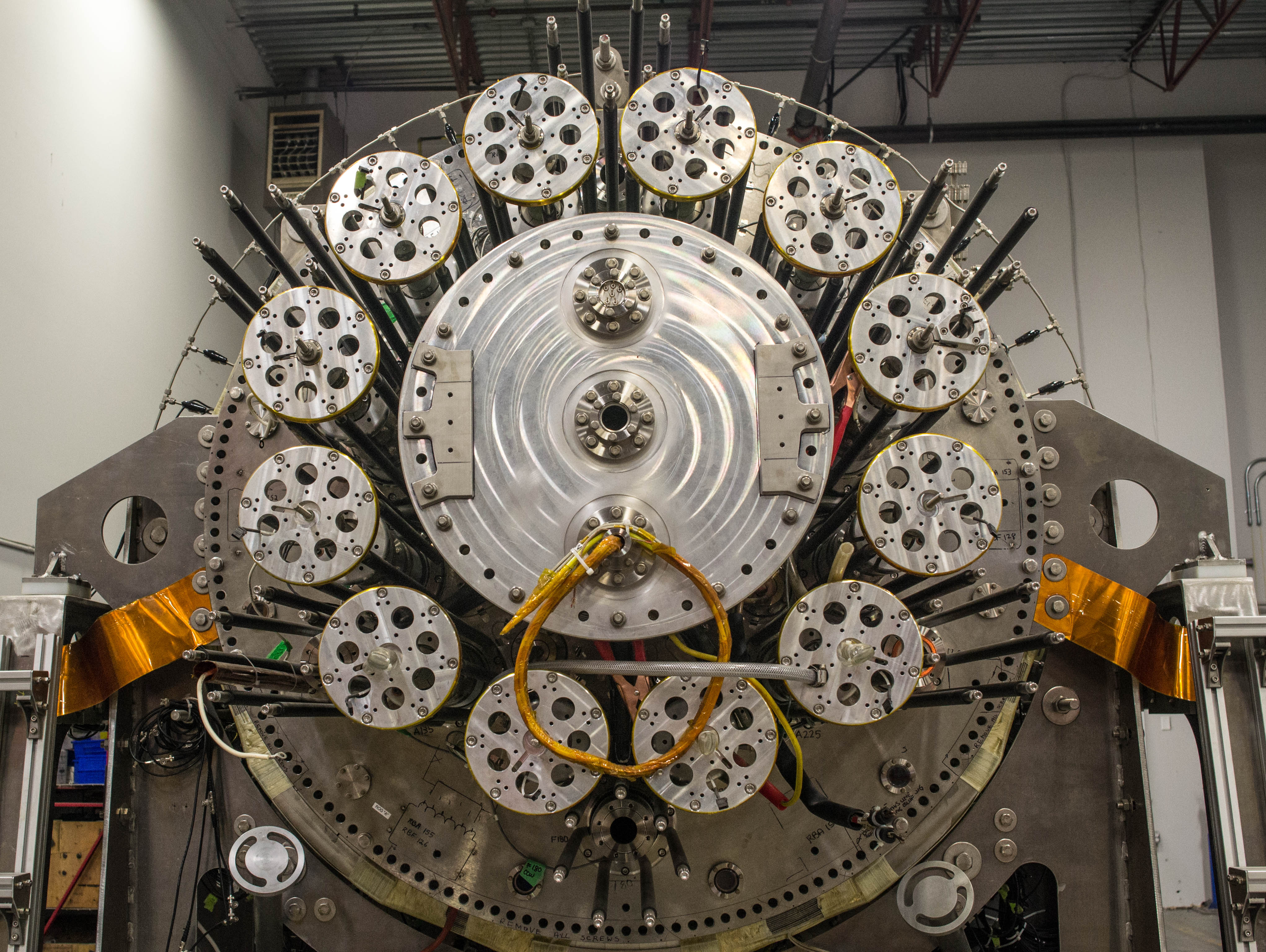
While these results are impressive for private companies, many physicists have pegged their hopes of fusion energy on ITER, an unprecedented international fusion experiment that has been decades in the making and is estimated to cost in the ballpark of $50 billion. ITER is essentially a massive version of a tokamak that was first proposed during a summit between Ronald Reagan and Soviet leader Mikhail Gorbachev in 1985. In the last 30 years, the development of ITER has stalled out due to funding problems and political in-fighting among the national collaborators.
ITER has been under construction since 2013 and has already racked up $14 billion in construction costs. It is expected to begin plasma confinement experiments in 2025. ITER’s proponents claim the facility will be able generate up to 500 megawatts of power for up to 50 minutes at a time. This is a tall order, considering the world record for fusion power is 16 megawatts, set at the UK’s JET reactor in 1997, and the longest plasma has been sustained was at France’s Tore Supra in 2003 at just six-and-a-half minutes.
But despite the long odds and pervasive (and perhaps unwarranted) optimism, Cuneo still thinks it’s worth pursuing fusion energy on all fronts, including in the private sector.
“It’s hard not to get discouraged or cynical by the timescales involved with fusion,” Cuneo said. “But anything that’s worth doing at this scale, if it’s clean and valuable for mankind, it’s worth investing in. Fusion is hard so I think studying all possible ways to it is something that the country has to do.”
Dear Future is a partnership with CNET that will explore the people, companies, and communities that are ushering in the future we were all promised. Follow along here .